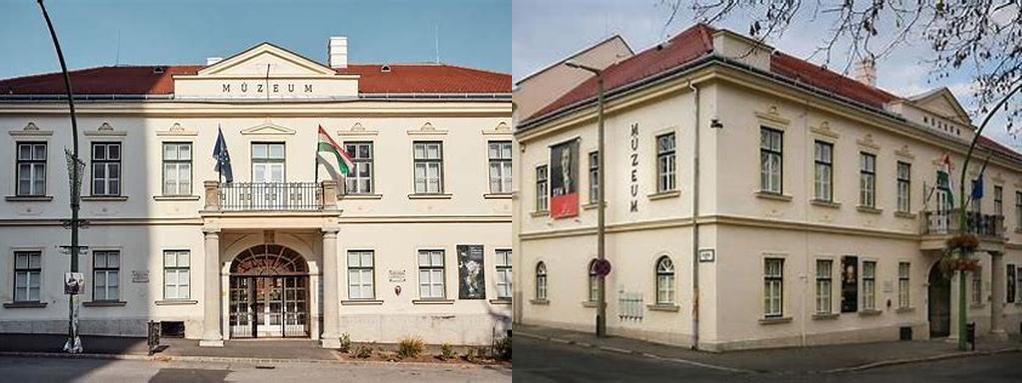
Kazinczy-udvarház, or the Kazinczy Manor House, is not just a pretty building tucked away in the heart of Sátoraljaújhely—it’s a place where a pivotal era of Hungarian culture and literature still whispers from the walls. Before you even step through its doors, imagine the echo of footsteps from centuries ago and reflect on the life of Ferenc Kazinczy, one of Hungary’s most celebrated writers and the driving force behind the country’s language reform. This manor, his former home, continues to hold the story of his life and Hungary’s cultural awakening, and honestly, it’s so much more than just another stately home.
When you arrive at Sátoraljaújhely—a modest yet storied town—the Kazinczy-udvarház stands out among the picturesque houses and tree-lined streets. Built in the early 19th century, with a classicist elegance that contrasts the woody Zemplén hills surrounding it, the manor exudes a welcoming, lived-in feel rather than museum stiffness. The house itself is relatively small as manors go, and that lends an almost intimate charm to the visit. You’re not just walking through hallways roped off with red velvet, but wandering into spaces where ideas that shaped modern Hungarian language were fiercely debated and lovingly nurtured.
The roots of the manor reach deep into the personal history of Ferenc Kazinczy (1759–1831), a figure central to Hungarian literature, whose relentless effort to modernize the Hungarian language is honored throughout the house. Displays in the rooms—some furnished as they were in Kazinczy’s time—offer glimpses into his relentless letter-writing (he crafted thousands!), the massive breadth of his personal library, and even the daily routines that supported his literary pursuits. It’s easy to appreciate the scale of his ambition here, but what’s better is how accessible he suddenly feels; it’s as if he’s just stepped out for a stroll.
Unlike some houses turned into sterile museums, the Kazinczy-udvarház feels tactile and inviting. You can almost picture Kazinczy hosting spirited discussions with fellow reformers—perhaps even tasting the occasional Tokaji wine. The manor invites you to reflect on the meaning of home and legacy; not some grand palace to impress, but a dynamic, working space dedicated to cultural innovation and the evolving Hungarian identity. Even the artifacts on display aren’t just relics—they are lived-in, each with a story that brings the man behind the myth into sharper focus.
One striking piece is the reconstructed study, scattered with Kazinczy’s personal effects: his writing desk crowded with quills, papers, and inkwells; a bust gazing with that characteristic writerly intensity; bookcases bending under tomes in a rainbow of battered spines. Through carefully curated exhibitions, you trace the steps of his friendships with other literary giants—like Mihály Vörösmarty and Ferenc Kölcsey. Walls come alive with original letters, quirky doodles, and faded portraits that make the 19th-century literary world more real, even if you don’t know your Hungarian poets from your pastry chefs.
The physical building, of course, has its own history. Kazinczy moved here late in life, and the structure survived not only the years but also the shifting tides of Hungarian and European history—wars, revolutions, sweeping reforms. There’s something quietly moving about a place that has watched so many chapters of change, and yet remains so vividly connected to its original purpose: fostering language, culture, and creativity. If you wander outside, you’ll find a memorial garden with towering trees and the kind of stillness perfect for contemplation or, if you’re inspired, scribbling your own poetic thoughts.
It would be a mistake to rush your visit. Take the time to browse the on-site exhibits dedicated to the 18th and 19th-century literary societies, admire hand-bound volumes, and piece together the intense debates that raged over the smallest turn of phrase—debates that still shape Hungarian literature today. If you’re feeling particularly adventurous, ask about the regional literary festivals or the occasional readings and workshops hosted within the manor’s walls. These modern events bring the legacy of Kazinczy into the present, proving the house still hums with the energy of creative minds.
A visit to the Kazinczy Manor House is about more than ticking off a historical site. It’s stepping into a narrative—of a person, a language, a people—intertwined with the bricks and boards themselves. If you care about language or the power of persistence, or you just want to discover a corner of Hungary where past and present hold hands, this manor offers a quietly compelling experience away from the usual tourist stampedes.





